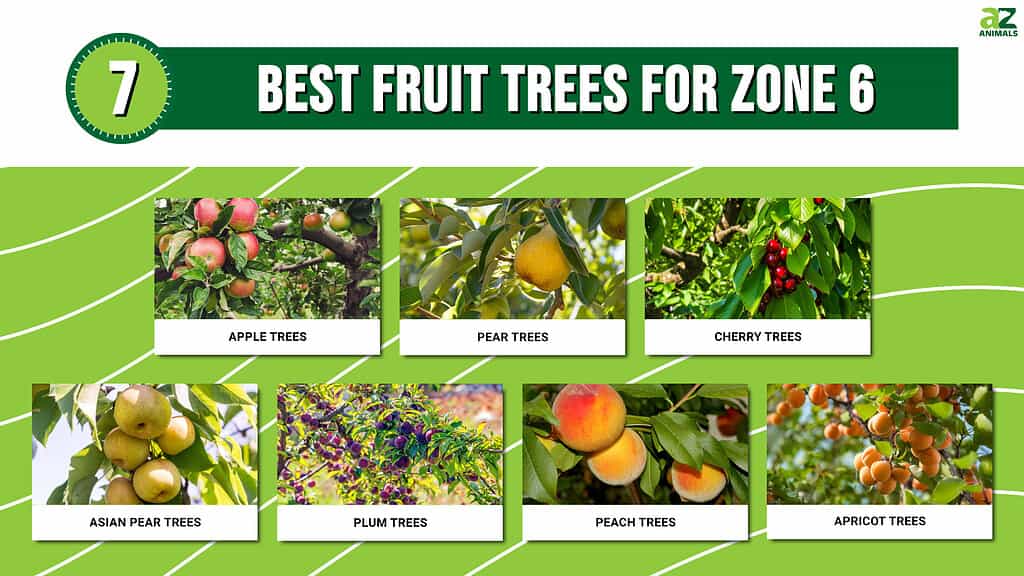
Most regions in Zone 6 feature a temperate climate with freezing winters and warm summers. In the United States, Zone 6 extends from Maine and Connecticut through the Midwest and Southwest and up into Eastern Washington and Oregon. But it can also fall into the northern parts of some southern states, like Georgia, Arkansas, and Texas.
If you live in hardiness Zone 6, you may wonder what fruit trees do well in these regions. And thankfully, you get a pretty good variety. If you want your own edible garden, check out these picks for the seven best fruit trees for Zone 6.
1. Apple Trees

Apple trees grow well in temperate climate like those in Zone 6.
©Julie Marshall/Shutterstock.com
Zone 6 is the perfect climate for apple trees and does best when planted in the early spring. However, not all apple varieties do well in temperate climates.
The best apple varieties for Zone 6:
- Mcintosh – red and green skin, small to medium, sweet and tart
- Honeycrisp – red and yellow skin, medium to large, juicy and sweet
- Gala – yellow-orange skin with red striping, small to medium, mild and sweet
- Honeygold – golden green with a red blush, medium to large, sweet and smooth
2. Pear Trees
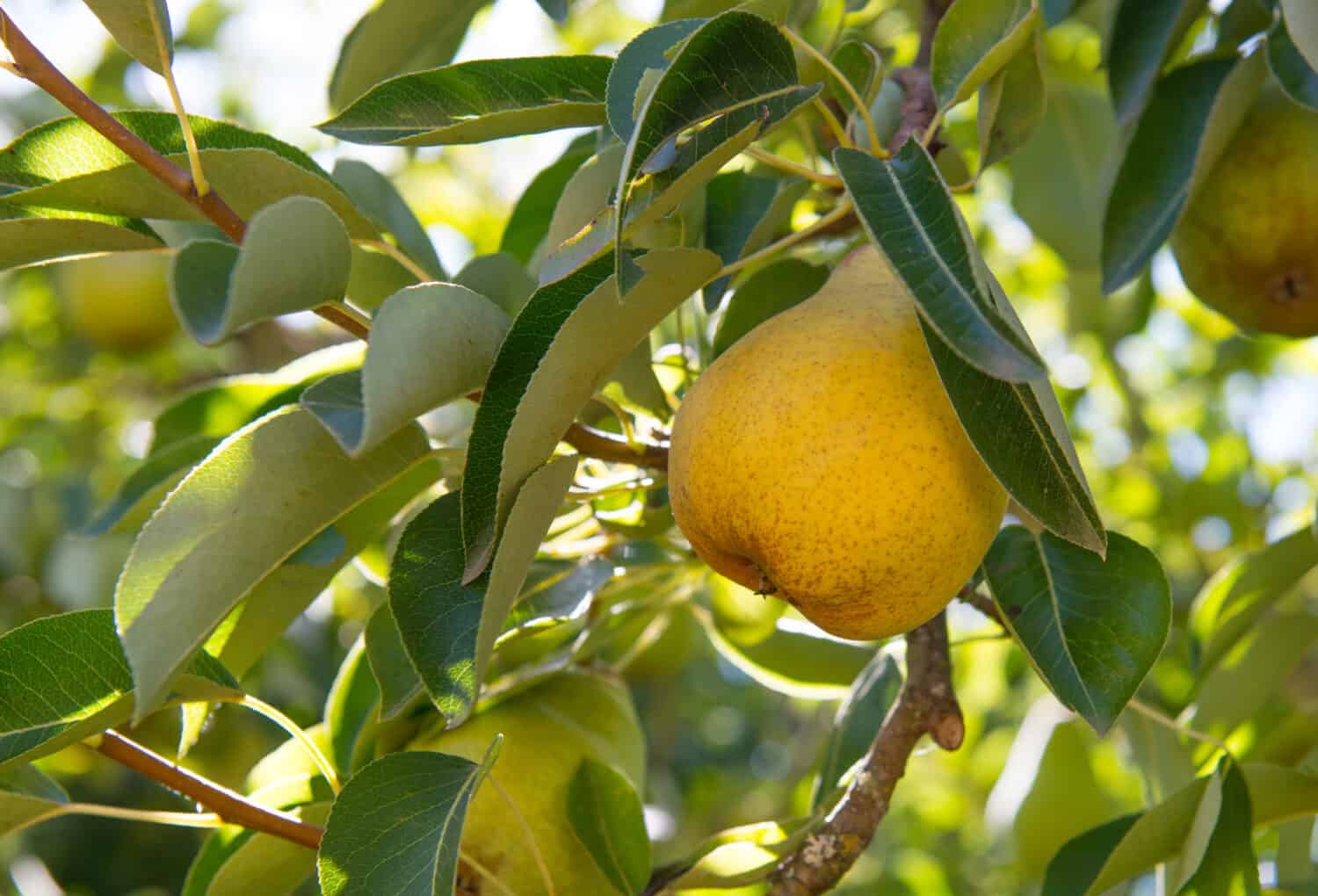
Bartlett pears are perfect for growing in Zone 6.
©Jennifer Bosvert/Shutterstock.com
Many pear trees flourish in cool, temperate regions with either wet or dry soil. They also like areas with full sun and can be planted in late spring, fall, or early winter.
The best pear varieties for Zone 6:
- Bartlett – green to yellow, medium to large, sweet and buttery
- Bosc – cinnamon brown, medium to large, honey-sweet and spicy
- Conference – green and light brown, medium, sweet and tangy
- Rescue – orange-red, large, mild and juicy
3. Cherry Trees
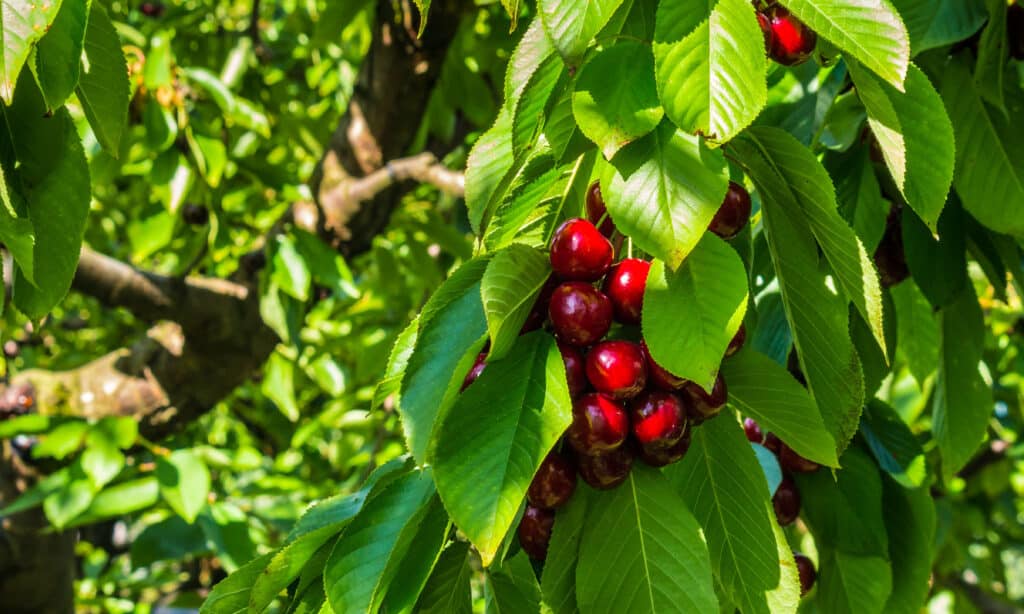
What are the best fruit trees for Zone 6? Cherry trees!
©patjo/Shutterstock.com
Most cherry trees do well in a Zone 6 climate, including sweet and sour varieties. It’s best to plant these fruit trees in early spring or late fall when the ground is soft, and there is plenty of moisture.
The best cherry varieties for Zone 6:
- Stella – bright red, medium to large, sweet and slightly tart
- Sweetheart – bright to dark red, small to medium, pleasantly sweet and rich
- Benton – light red, large, very sweet and acidic
- Richmond – bright red, medium, tart and tangy
4. Asian Pear Trees
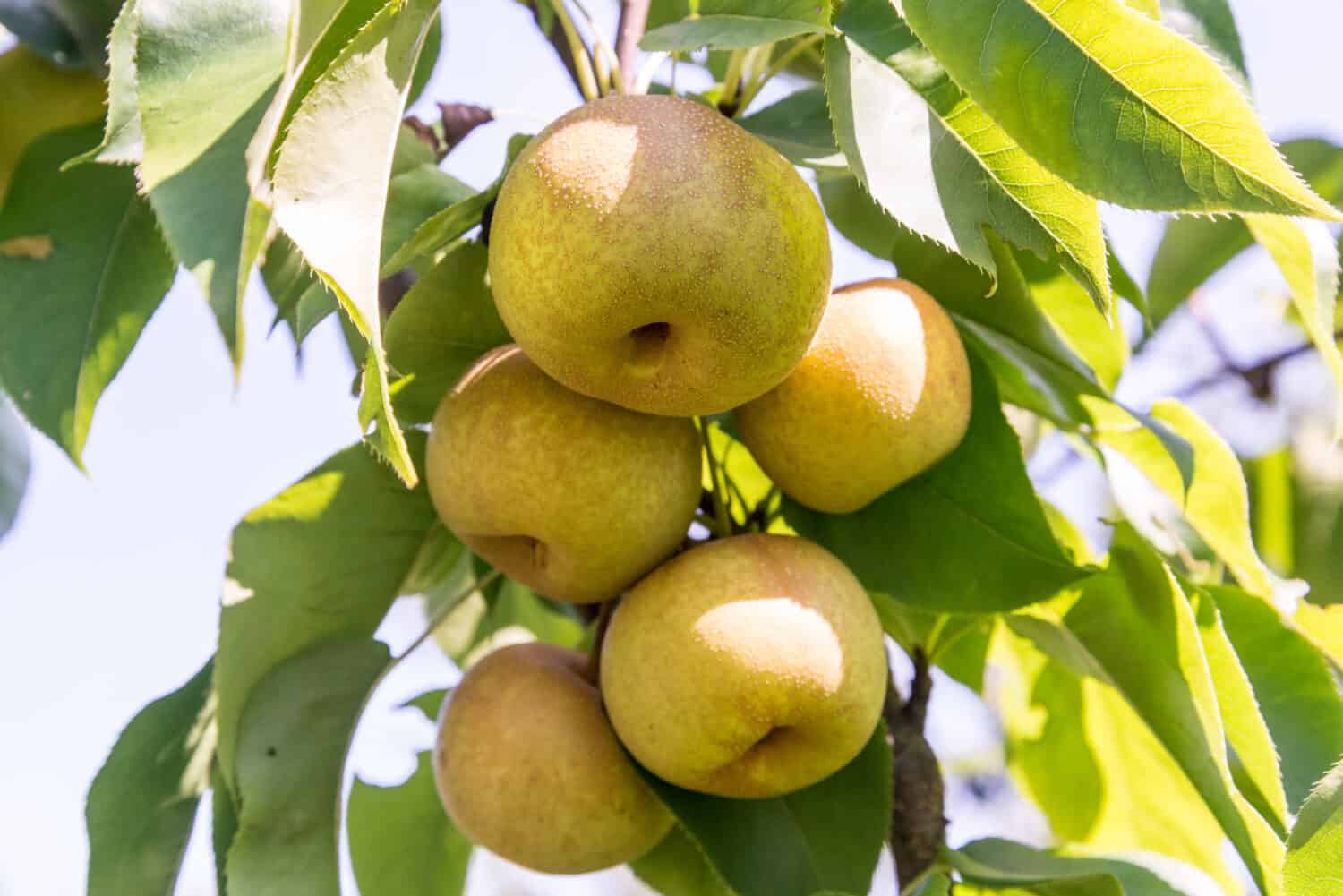
Kosui pears are sweet and spicy.
©Pe3k/Shutterstock.com
Asian pears grow in USDA zones 5 through 6, where they thrive in cool, wet weather. And these fruit trees are easy to grow, pest resistant, easy to care for, and provide excellent fresh snack options.
The best Asian pear varieties for Zone 6:
- Kosui – yellow to golden brown, medium, sweet and spicy
- Shinseiki – bright to golden yellow, medium to large, mild and juicy
- Atago – golden brown, large, sweet and tropical
- Seuri – yellow-orange and brown, medium to large, vanilla and aromatic
5. Plum Trees
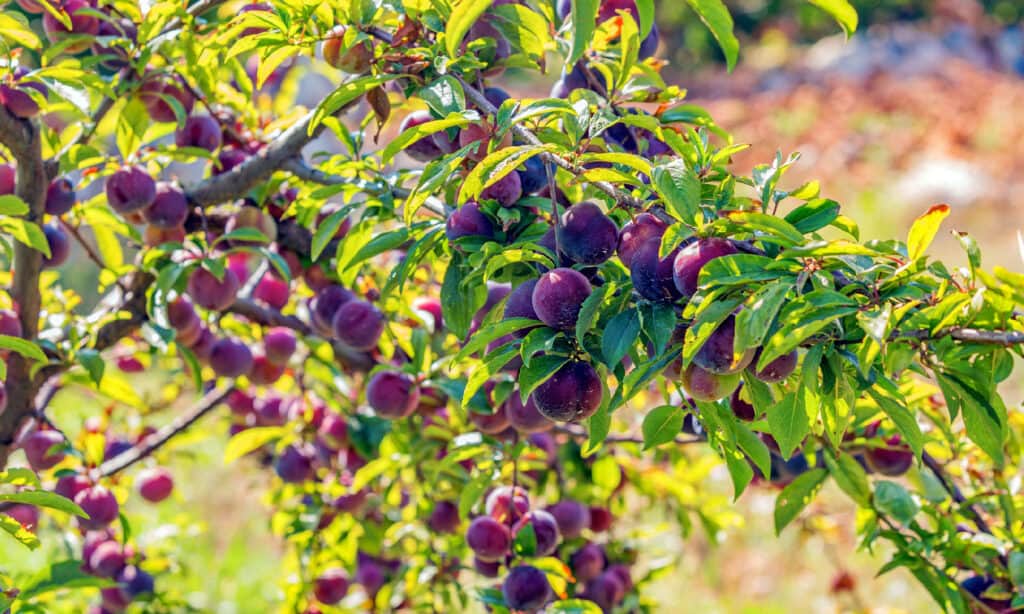
Damson plums are sweet and tart and grow well in hardiness Zone 6.
©iStock.com/Funtay
The plum tree is very hardy and does well in Zone 6. Both European and Asian varieties flourish in this region with full sun and well-draining soil. Early spring is the best time to plant plum trees in this area.
The best plum varieties for Zone 6:
- Damson – dark purple to blue-black, medium, sweet and tart
- Santa Rosa – deep reddish-purple, large, very sweet and juicy
- Premier – glossy red, large, slightly sour and sweet
- Stanley – deep blue-purple, large, sweet and rich
6. Peach Trees
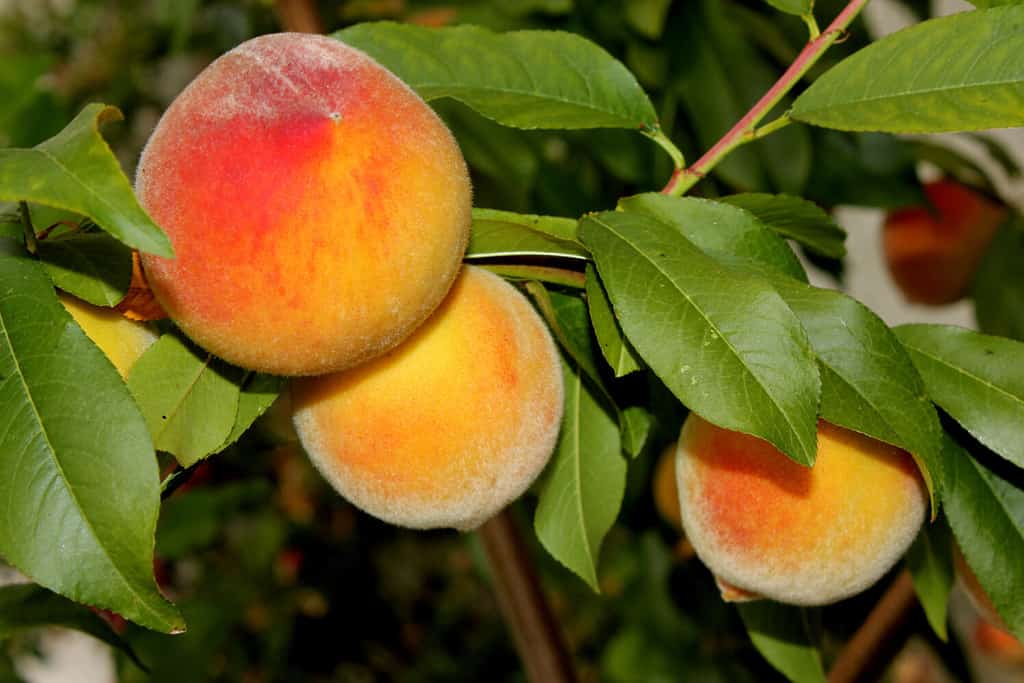
Elberta peaches do well in full sun and well-drained soil.
©Gurcharan Singh/Shutterstock.com
While you can grow peach trees in zones 4 through 9, they do the best when grown in zones 6 and 7. These fruit trees require regular pruning and other maintenance and do best when planted in full sun and well-drained soil.
The best peach varieties for Zone 6:
- Elberta – yellow with red blush, large, honey-sweet and juicy
- Reliance – yellow and red, medium to large, mild and distinct peach flavor
- Candor – yellow-orange, medium, sweet with low acidity
- Madison – bright red, medium, mild and rich
7. Apricot Trees
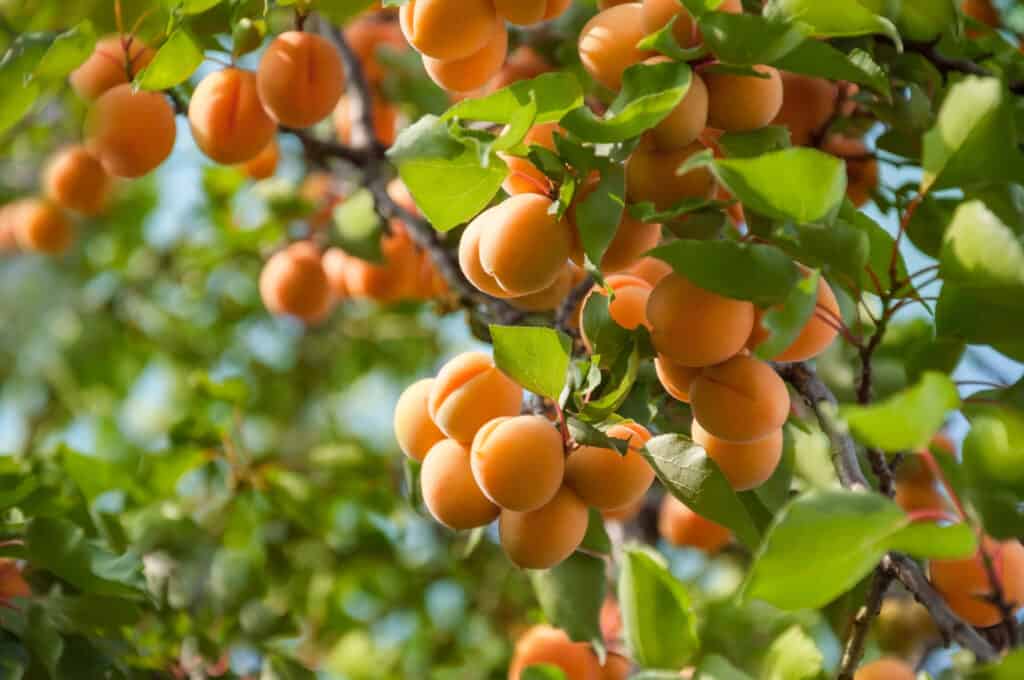
Several varieties of apricot trees flourish in temperate areas.
©iStock.com/Zoya2222
It’s true that apricot trees do best in warm southern states, but some varieties can tolerate the cold in Zone 6. And they do best when planted in mid-spring.
The best apricot varieties for Zone 6:
- Sungold – gold and orange blush, medium, bright and sweet
- Moongold – gold with a slight red blush, medium, sweet and slightly acidic
- Chinese sweet pit – golden orange, medium, firm and sweet with an almond-like pit
- Royal Blenheim – golden orange with pink overtones, medium, honey-sweet and floral
The Best Fruit Trees for Zone 6: A Recap of the Top 7
| Rank | Best Fruit Trees For Zone 6 | Varieties |
|---|---|---|
| #1 | Apple Tree | Honeycrisp, Mcintosh, Gala, Honeygold |
| #2 | Pear Tree | Bartlett, Bosc, Conference, Rescue |
| #3 | Cherry Tree | Stella, Sweetheart, Benton, Richmond |
| #4 | Asian Pear Tree | Kosui, Shinseiki, Atago, Seuri, |
| #5 | Plum Tree | Damson, Santa Rosa, Premier, Stanley |
| #6 | Peach Tree | Elberta, Reliance, Candor, Madison |
| #7 | Apricot Tree | Sungold, Moongold, Chinese sweet pit, Royal Blenheim |
The photo featured at the top of this post is © Pe3k/Shutterstock.com
Thank you for reading! Have some feedback for us? Contact the AZ Animals editorial team.







